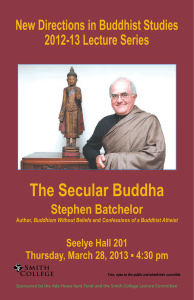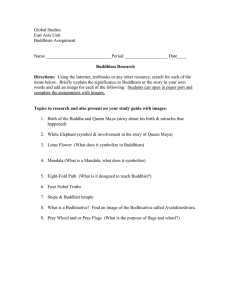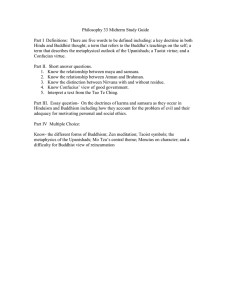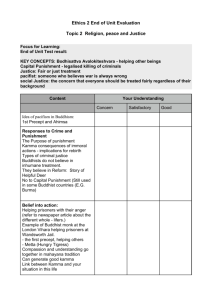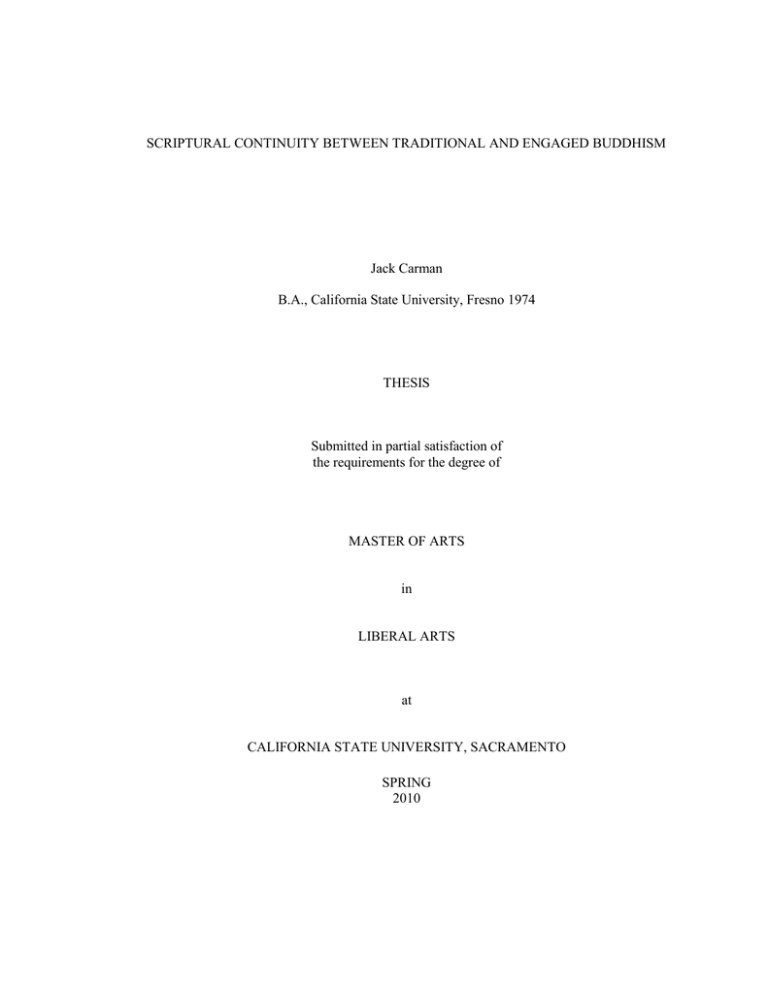
SCRIPTURAL CONTINUITY BETWEEN TRADITIONAL AND ENGAGED BUDDHISM
Jack Carman
B.A., California State University, Fresno 1974
THESIS
Submitted in partial satisfaction of
the requirements for the degree of
MASTER OF ARTS
in
LIBERAL ARTS
at
CALIFORNIA STATE UNIVERSITY, SACRAMENTO
SPRING
2010
© 2010
Jack Carman
ALL RIGHTS RESERVED
ii
SCRIPTURAL CONTINUITY BETWEEN TRADITIONAL AND ENGAGED BUDDHISM
A Thesis
by
Jack Carman
Approved by:
__________________________________, Committee Chair
Joel Dubois, Ph.D.
__________________________________, Second Reader
Jeffrey Brodd, Ph.D.
____________________________
Date
iii
Student: Jack Carman
I certify that this student has met the requirements for format contained in the University format
manual, and that this thesis is suitable for shelving in the Library and credit is to be awarded for
the thesis.
__________________________, Department Chair ___________________
Jeffrey Brodd, Ph.D.
Date
Liberal Arts Master’s Program
iv
Abstract
of
SCRIPTURAL CONTINUITY BETWEEN TRADITIONAL AND ENGAGED BUDDHISM
by
Jack Carman
Engaged Buddhism is a modern reformist movement. It stirs debate concerning the
scriptural and philosophical origins of Buddhist social activism. Some scholars argue there is
continuity between traditional Buddhism and a rationale for social activism in engaged
Buddhism. Other scholars argue that while the origins of social activism may be latent in the
traditional scriptures, this latency cannot be activated until Asian Buddhism interacts with
Western sociopolitical theory.
In this thesis I present an overview of Buddhist fundamentals that are common to both
traditional and engaged Buddhism, and I conduct a critical overview of three seminal Buddhist
texts – The Dhammapada, The Edicts of Asoka, and Nagarjuna’s Precious Garland. I provide
critical reviews of contemporary Buddhist scholars representing both the traditional and
modernist schools. I also provide overviews of exemplary Buddhist social leaders whose
teachings do not sacrifice tradition and do not rely on the Western world for validation.
I conclude that there is evidence for scriptural and philosophical continuity between
traditional and engaged Buddhism. When scholars and activists insist that engaged Buddhism is a
product of the twentieth and twenty-first century however, they deny the roots of a social theory
in the Buddha’s original teachings.
_______________________, Committee Chair
Joel Dubois, Ph.D.
_______________________
Date
v
ACKNOWLEDGMENTS
This thesis is dedicated to the memory of Swami Shraddhananda (1907-1996)
With special thanks to:
Dr. Joel Dubois and Dr. Jeffrey Brodd for their guidance and expertise,
Shelley Carman for her love, patience, and understanding,
and to
Arin Holecek and Adam Carman for being my children and my best friends.
vi
TABLE OF CONTENTS
Page
Chapter
1. INTRODUCTION .............................................................................................. 1-7
2. Theravada and Mahayana ................................................................................. 7-11
3. Scriptural Origins of Buddhist Fundamentals................................................. 11-19
4. Buddhist Ethics ............................................................................................... 19-22
5. The Dhammapada ........................................................................................... 22-27
6. The Edicts of Asoka ........................................................................................ 28-31
7. Nagarjuna’s Precious Garland ........................................................................ 31-39
8. Thomas Yarnall ............................................................................................... 40-48
9. Kenneth Kraft.................................................................................................. 48-53
10. Ken Jones ........................................................................................................ 54-57
11. Christopher Queen .......................................................................................... 57-65
12. A. T. Ariyaratne .............................................................................................. 65-68
13. Buddhadasa Bhikkhu ...................................................................................... 68-73
14. Sulak Sivaraksa ............................................................................................... 73-77
15. Thich Nhat Hanh and the Dalai Lama ............................................................ 77-85
16. Conclusion ...................................................................................................... 85-87
BIBLIOGRAPHY ................................................................................................. 88-94
vii
viii
ix
x


